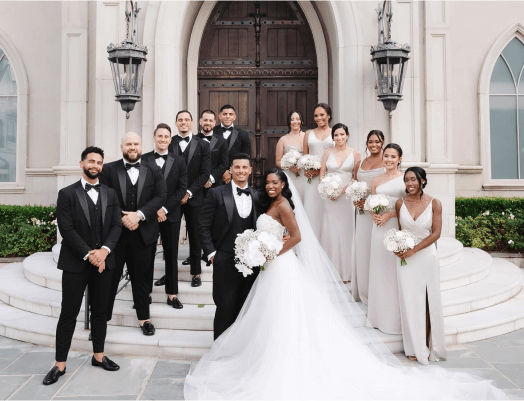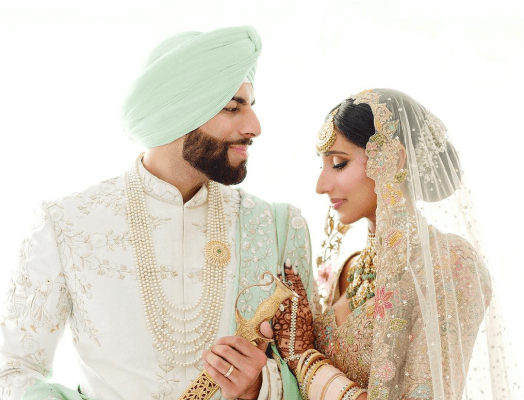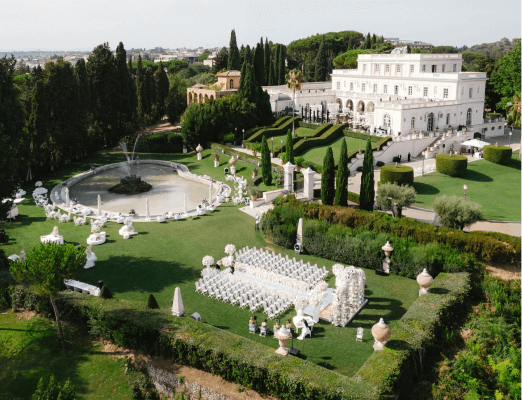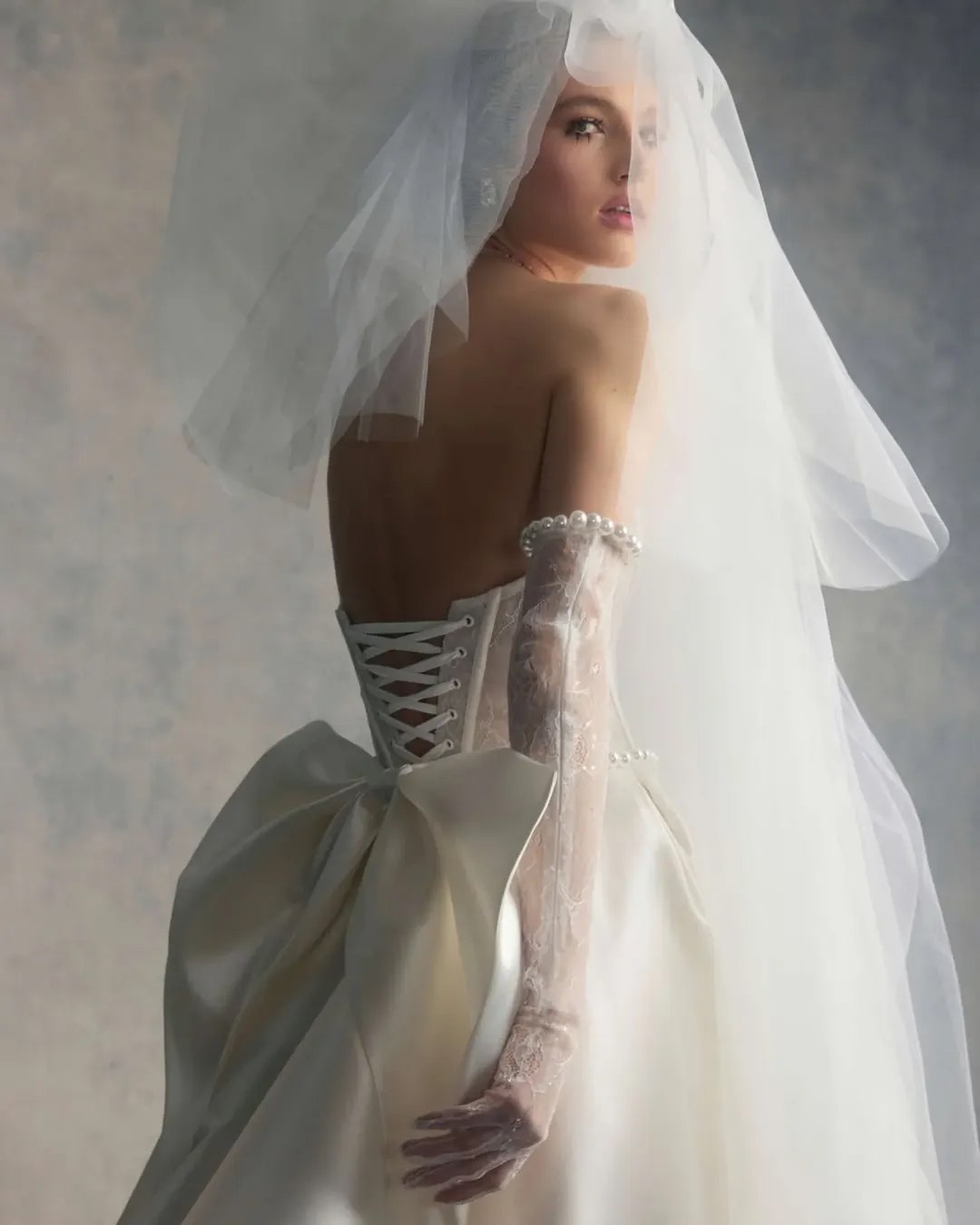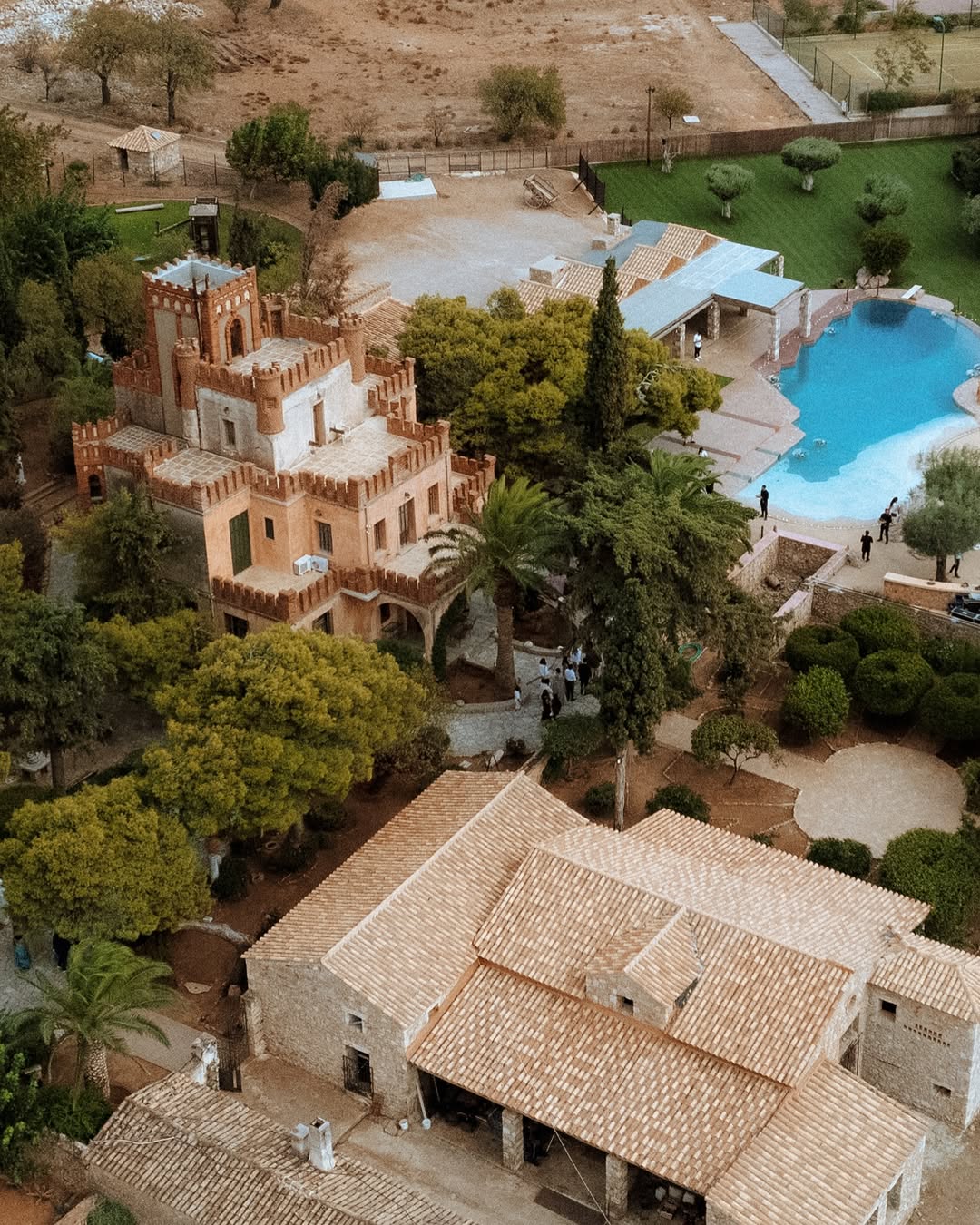The Soft Aesthetic of a Provence Wedding
- Author: Natali Grace Levine
- Reading time: 8 min 27 sec
- Publication date: 11/07/2025
- Updated: 11/26/2025
- The Soul of Provence — Where Romance Lives in the Details
- Color Palette — Sun-Bleached and Tender
- Textures That Tell Stories
- Florals — Wild, Not Wired
- Provence Wedding Decor — Effortless, Never Overdone
- The Dress — A Provencal Wedding Dress That Breathes
- The Table — Where Provence Comes to Life
- Traditions Rooted in the Land
- Provence Inspired Wedding — How to Bring This Magic Home
The air smells of lavender and wild thyme. Light filters through olive branches, catching dust motes that drift like tiny stars. A table stretches beneath a canopy of wisteria, dressed in rumpled linen the color of aged parchment. This isn't a wedding designed to impress — it's a wedding designed to feel. To breathe. To linger in memory not as a series of perfect photographs, but as a warmth that never quite leaves. A provence wedding doesn't announce itself… it whispers. The aesthetic is one of sun-bleached softness, where beauty emerges not from perfection but from the presence of time, texture, and the unhurried rhythm of life in the South of France. It's a celebration rooted in place — in stone farmhouses and sprawling fields, in the taste of ripe peaches and the sound of cicadas at dusk. This is romance distilled to its essence: simple, sensory, and utterly timeless.
Find Your Perfect Wedding Vendors
The Soul of Provence — Where Romance Lives in the Details




There's a difference between styling a wedding and letting it unfold naturally. A provençal wedding belongs to the latter. The magic doesn't live in orchestrated moments or Instagram-ready installations — it lives in the way sunlight moves across a table, in the scent of rosemary crushed underfoot, in laughter that echoes off ancient stone walls.
Couples drawn to this aesthetic tend to share a philosophy: less performance, more presence. They want their guests to feel something — the warmth of good wine, the softness of linen napkins, the breeze that carries the scent of wild herbs. The provence inspired wedding isn't about recreating a Pinterest board. It's about capturing a mood, a slowness, a connection to something older and quieter than trend cycles and vendor lists.
Color Palette — Sun-Bleached and Tender




The colors of Provence are never loud. They're the palette of a landscape shaped by sun and stone, of terracotta roofs weathered to dusty rose and fields bleached to honeyed gold. Lavender, of course — but not the bright, saturated purple of floristry catalogs. The soft, grayed-out violet of wild blooms nodding in a July breeze. Sage green. Apricot. Cream that's closer to butter than white. Dusty mauve. Ochre. The muted warmth of old plaster walls. These are colors that change with the light, that feel different at noon than they do at dusk. They don't compete with one another — they settle into harmony, the way shadows and sunlight share the same stone.
The provence wedding aesthetic draws its power from contrast: tender against earthy, soft against textured, cool against warm. A blush silk ribbon trailing over weathered wood. Olive branches against ivory linen. It's a palette that feels alive, never flat, because it mirrors the natural world where nothing is uniform and everything shifts.
Signature Provençal colors:
- Lavender and sage — fields and herbs
- Honey and apricot — sun-soaked stone
- Dusty rose and terracotta — clay roofs at dusk
- Olive green and cream — ancient groves
Textures That Tell Stories




In a provencal wedding, texture matters more than color. This is an aesthetic built on touch as much as sight — on surfaces that have aged, materials that breathe, objects that carry history in their imperfections.
Linen is essential. Not crisp, starched linen, but the kind that wrinkles beautifully, that softens with each wash, that feels cool against skin on a warm afternoon. Table runners left deliberately crumpled. Napkins tied loosely with twine. Fabrics that move with the breeze and catch the light in folds and shadows.
Wood matters too. Not polished mahogany or gleaming oak, but weathered farm tables with knots and cracks, chairs with paint peeling gently at the edges, benches worn smooth by decades of use. The wood shouldn't look new — it should look loved.
Stone. Terracotta. Ceramic with uneven glazes. Vintage glassware in mismatched shades of amber and green. Woven baskets. Hand-thrown pottery. Every surface tells a story of hands that shaped it, time that softened it, sun that faded it. The provance style wedding embraces the irregular, the handmade, the gently imperfect. This is where luxury reveals itself not in flawlessness but in authenticity.
Florals — Wild, Not Wired




Provençal florals don't look arranged. They look gathered. Imagine walking through a summer meadow with a basket, picking whatever catches your eye — Queen Anne's lace, wild roses, sprigs of lavender still dusted with pollen. This is the aesthetic: loose, organic, a little disheveled in the most beautiful way.
Lavender anchors the palette, of course, but it's never alone. Garden roses in shades of blush and cream tumble alongside it. Olive branches add structure and that signature silver-green shimmer. Herbs — rosemary, thyme, sage — bring texture and scent, their fragrance released when brushed against or crushed underfoot. There's wheat for golden, tactile drama. Ranunculus and anemones for softness. Sunflowers if the season calls for it, though always the smaller, more delicate varieties. Artichokes on their stems. Wild grasses that nod and sway. The arrangements aren't symmetrical or tightly wired — they're organic, asymmetrical, alive with movement.
Bouquets are hand-tied with silk ribbon or twine, not foam and wire. Centerpieces sit low and loose in terracotta pots or vintage pitchers, never towering above conversation. Ceremony arches are simply dressed — olive branches, eucalyptus, a few blooms — allowing the landscape to remain the star. The provence wedding decor begins and ends with the understanding that nature doesn't need improvement, only celebration.
Provençal flower heroes:
- Lavender (obviously)
- Garden roses in soft hues
- Olive branches
- Wild grasses and wheat
- Herbs: rosemary, thyme, sage
- Sunflowers (for summer weddings)
- Ranunculus and anemones
Provence Wedding Decor — Effortless, Never Overdone




The hallmark of provence wedding decor is restraint. Not minimalism — this isn't Scandinavian austerity — but a refusal to over-decorate. The landscape does most of the work. Stone walls, olive groves, open skies. Why cover them with fabrications?
Tables are long and communal, the kind where strangers become friends by the second course. They're dressed in linen runners, sometimes layered, always a little rumpled. Plates are terracotta or vintage china, mismatched intentionally. Glassware catches the light — amber, green, clear — collected from markets or borrowed from grandmothers. Flatware is simple, maybe tied with a sprig of lavender or a handwritten name card in flowing script. Candles are non-negotiable. Dozens of them. Tapers in brass holders, votives clustered in groups, pillars melting slowly as the night unfolds. Never LEDs — the flicker matters. String lights might drape through olive trees, but they're warm-toned, subtle, never harsh. Handwritten menus on handmade paper. Woven baskets holding bread or favors. A vintage rug beneath the cake table. Sprigs of lavender tucked into napkin rings. Everything feels collected, curated, but never contrived. Ceremony spaces need little: an arch of olive branches, a scattering of petals, chairs facing the view. The couple stands where the light is best, where the land opens up, where the moment feels held by something larger than decoration.

The Dress — A Provencal Wedding Dress That Breathes




A provencal wedding dress moves. It catches the breeze, floats over stone paths, pools softly when the wearer sits. This is not a gown built for grand entrances down marble staircases — it's a dress made for dancing barefoot, for walking through lavender fields, for laughing under olive trees.
Silhouettes are romantic but unfussy. Flowing A-lines, soft sheaths, delicate slips. Fabrics that drape rather than structure: silk charmeuse, chiffon, cotton voile, airy organza. Lace, yes, but the kind that looks hand-stitched, botanical, soft against skin rather than stiff and ornate. Open backs that dip low, revealing sun-kissed shoulders. Sleeves that billow gently — bishop sleeves, puffed at the shoulder, gathered at the wrist. Delicate embroidery of vines, flowers, wheat. Tiny pearl buttons trailing down the spine. Ribbon ties instead of zippers.
And the shoes? Often an afterthought. Espadrilles. Leather sandals. Ballet flats. Sometimes nothing at all. Because a wedding in Provence is about feeling the earth beneath your feet, about moving freely, about comfort that doesn't compromise beauty.
The Table — Where Provence Comes to Life




If there's a heart to a provençal wedding, it's the table. Not the ceremony, not the first dance — the meal. This is where hours dissolve, where conversation deepens, where strangers become family over shared plates and too much wine.
The table itself is long, communal, dressed simply. Linen runners, candles in clusters, low florals that don't obstruct eye contact. The setting is beautiful but unstudied — mismatched plates, vintage glassware, linen napkins tied with twine or tucked with sprigs of rosemary. Food arrives family-style. Big platters passed hand to hand. Heirloom tomatoes still warm from the sun, burrata oozing onto rustic bread. Herb-roasted chicken falling off the bone, lamb studded with garlic and thyme. Ratatouille served in a ceramic dish, vegetables swimming in olive oil and summer. Grilled zucchini, roasted peppers, platters of local cheeses. Bread in woven baskets, olive oil in small bowls for dipping. Dessert is simple but perfect. A fruit tart glazed with apricot, lavender-infused cream, fresh figs. Wine flows endlessly — rosé from local vineyards, pale and chilled, served in mismatched carafes.
This is not a banquet designed to impress. It's a meal designed to nourish, to slow time, to remind everyone that the best moments happen when you stop performing and start savoring. A wedding in Provence tastes like summer, smells like herbs, sounds like laughter that stretches late into the night.
A Provençal menu might include:
- Heirloom tomato and burrata salad
- Herb-roasted chicken or lamb
- Ratatouille and grilled vegetables
- Fresh baguettes with local olive oil
- Fruit tarts with lavender cream
- Rosé wine from local vineyards
Traditions Rooted in the Land




Provence carries traditions that feel less like formality and more like folklore. These aren't the stuffy rituals of grand ballrooms — they're customs rooted in land, community, and the rhythms of rural life.
There's the blessing with bread and salt, an old gesture symbolizing abundance and flavor in marriage. The farandole — a traditional chain dance where guests link hands and wind through the gardens, weaving past olive trees and under arbors, laughter echoing off stone walls. It's chaotic, joyful, participatory. Everyone dances, from grandmothers to children.
Lavender plays a ceremonial role beyond decoration. Bundles are given to guests as favors, tied with ribbon, sometimes tucked into pockets or hair. It's believed to bring luck, protection, and calm. The scent lingers long after the wedding ends.
Family involvement runs deep. Aunts help set tables. Cousins arrange flowers. Neighbors bring wine from their cellars. The wedding isn't a hired production — it's a collective act of love, where the couple is held not by vendors but by the people who know them best. This is the soul of a provençal wedding.

Provence Inspired Wedding — How to Bring This Magic Home




The question always comes: can this be recreated elsewhere? The answer is yes — but only if the philosophy travels with the aesthetic. Provence isn't about geography. It's about approach.
Start with the venue. Look for places with character, history, and natural beauty. Stone buildings, gardens, fields, vineyards. Spaces that don't need to be transformed because they already carry presence. Avoid anything too polished, too modern, too blank. Source locally and seasonally. The flowers, the food, the wine. The goal isn't to ship lavender across the country — it's to embrace whatever blooms where you are, arranged with the same looseness and intention. Wildflowers from local fields. Herbs from farmers' markets. Bread from the best bakery in town. Prioritize texture: linen, wood, ceramic, stone. Let things be imperfect… mismatched plates, wrinkled tablecloths, handmade details. This is where the Provence inspired wedding distinguishes itself from mere imitation — it captures the feeling of Provence rather than copying its visual markers. Slow down and build in time for the aperitif, for lingering over dinner, for conversations that meander. Resist the urge to pack the day with activities. Let moments unfold naturally. Let the light shift. Let people breathe.
How to translate Provençal vibes anywhere:
- Choose venues with natural stone, gardens, or fields
- Use local, seasonal flowers in loose arrangements
- Prioritize linen, wood, and handmade ceramics
- Serve family-style meals with rustic plateware
- Let imperfection be part of the beauty
- Focus on golden hour light
- Keep the palette soft and sun-bleached
The Provence wedding aesthetic endures not because it's trendy but because it taps into something fundamental: the desire for beauty that feels real, celebration that feels human, moments that feel present rather than performed. It's a reminder that the best weddings aren't the ones that look perfect in photos — they're the ones that feel perfect in memory. Lavender fades. Candles burn down. Linen wrinkles. And somehow, that's the point. The beauty lies in impermanence, in the acceptance that nothing stays perfect and nothing needs to. What remains is the warmth of a summer night, the taste of good wine, the sound of laughter carried on a breeze. That's Provence. That's the feeling worth chasing.













